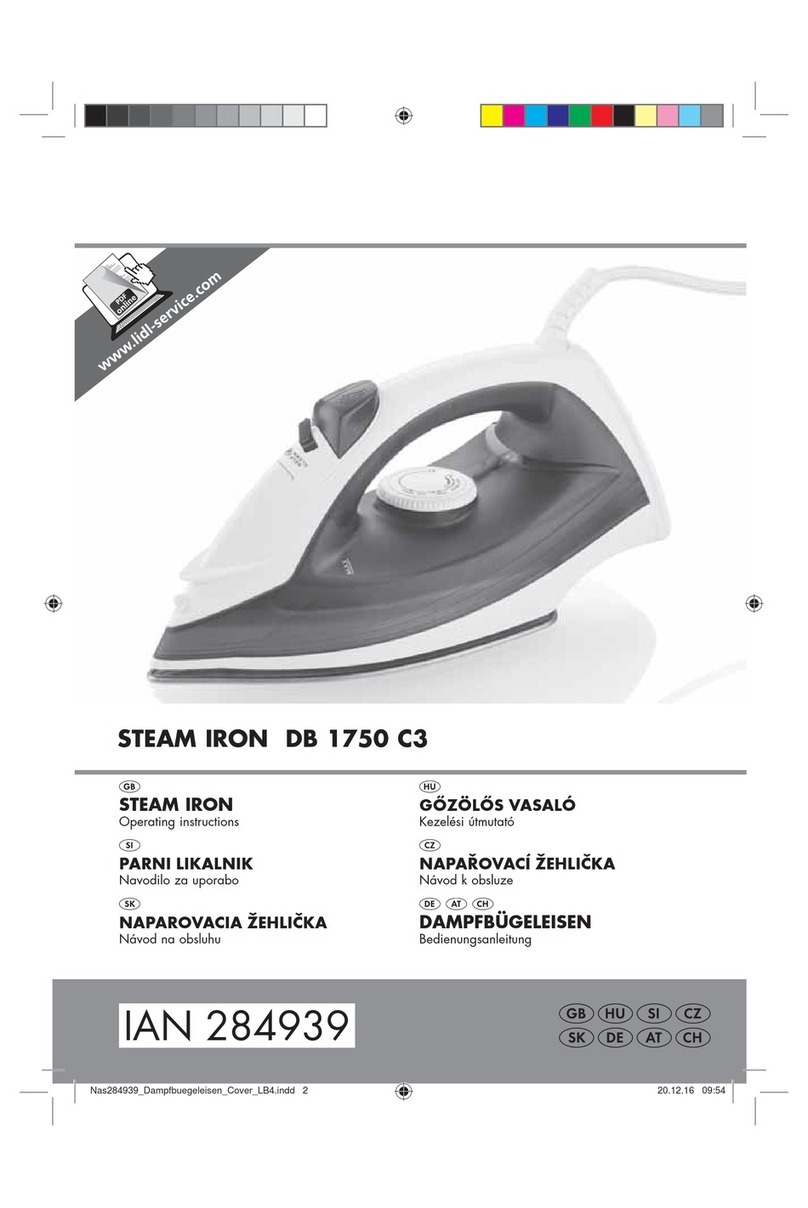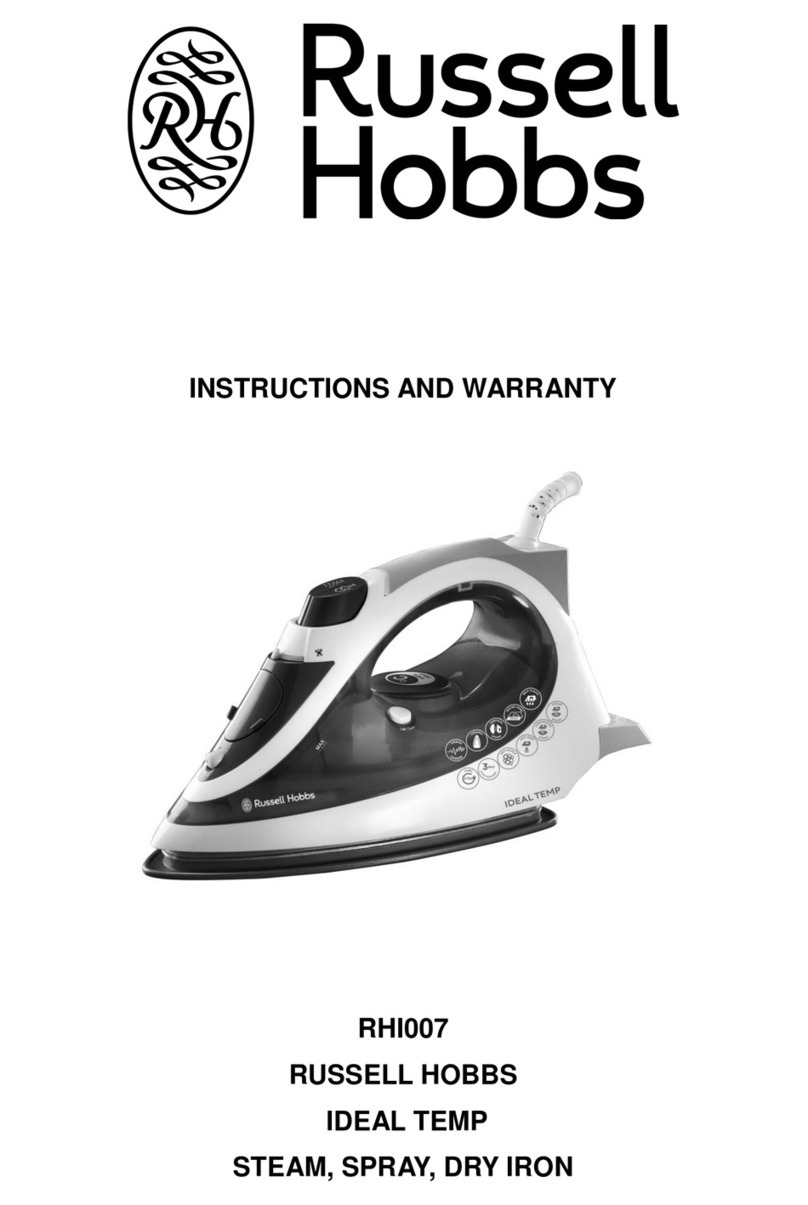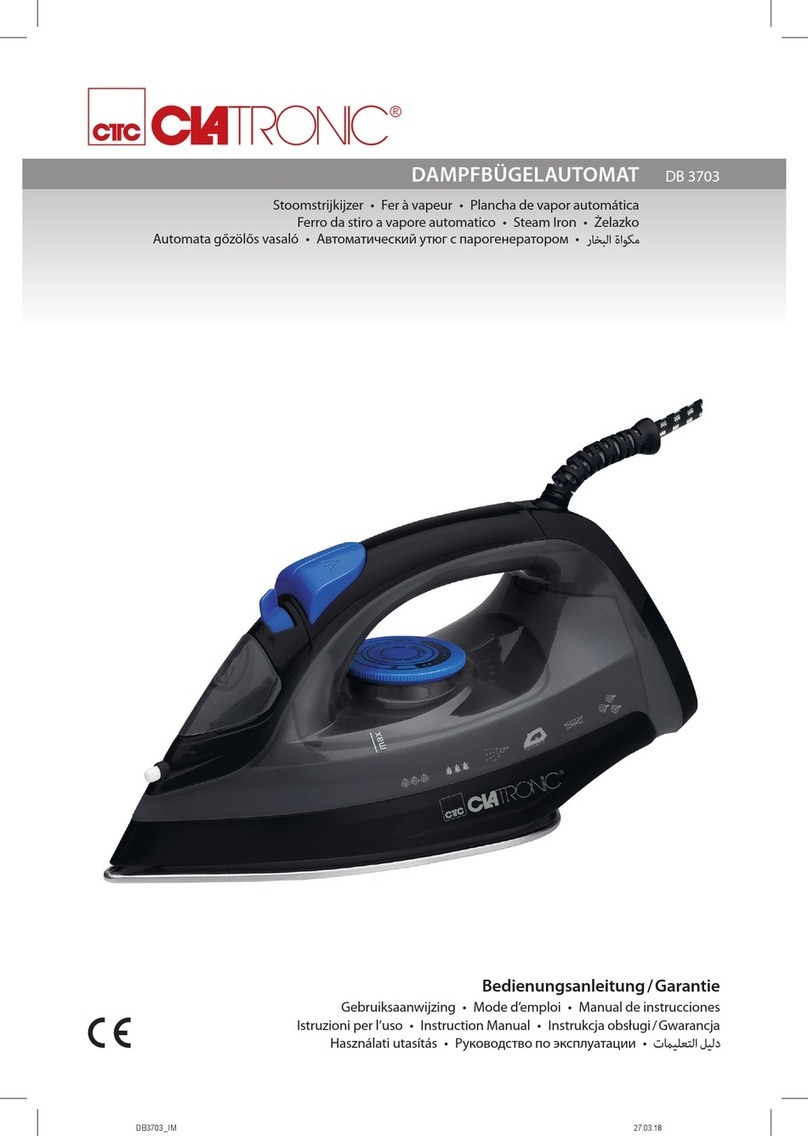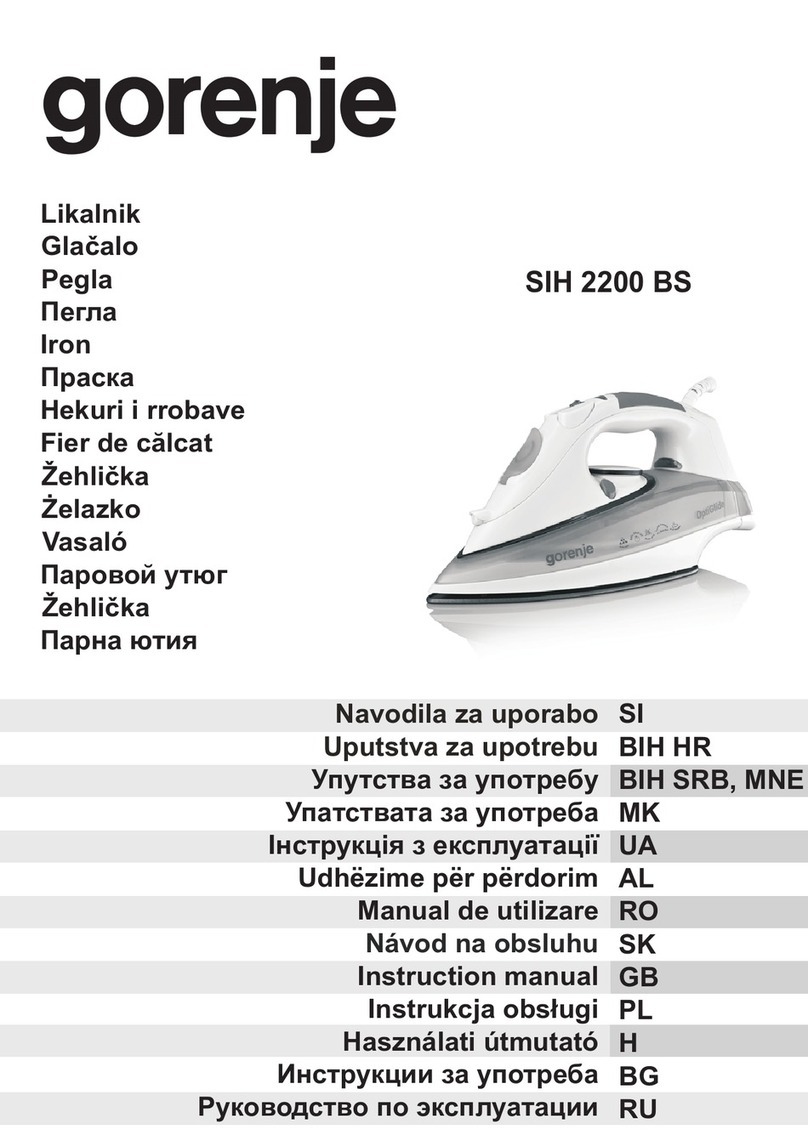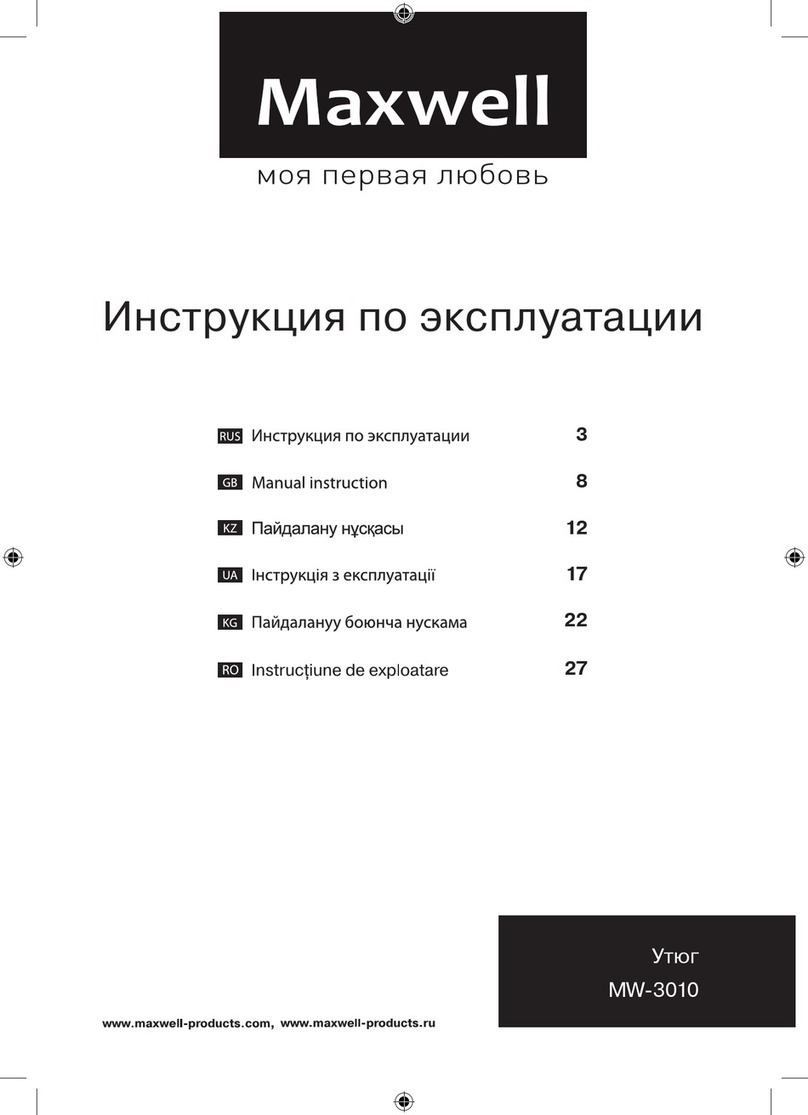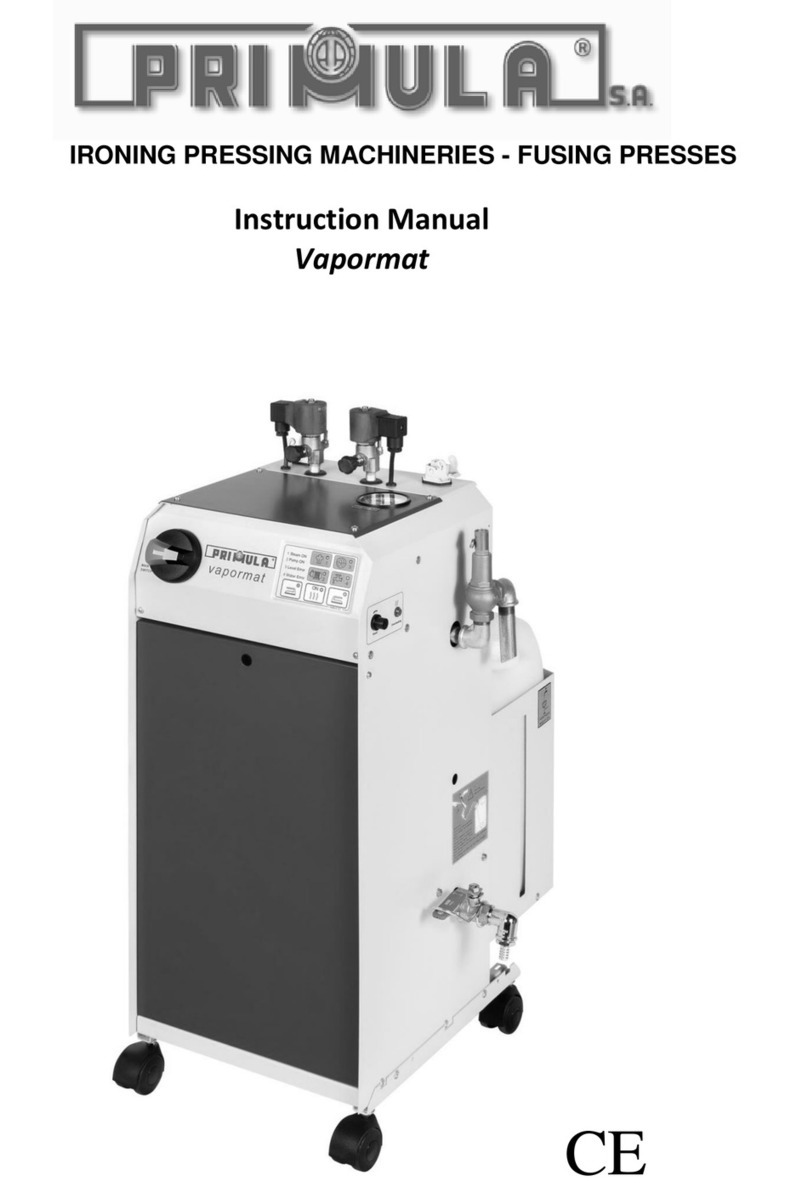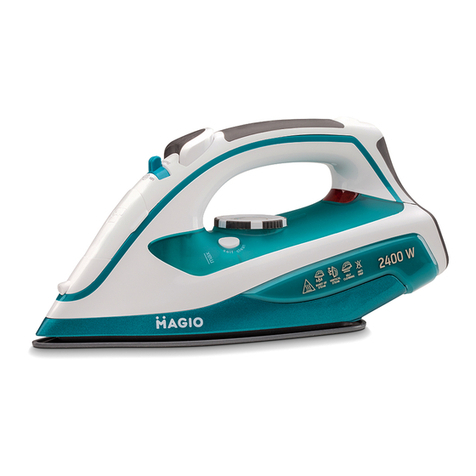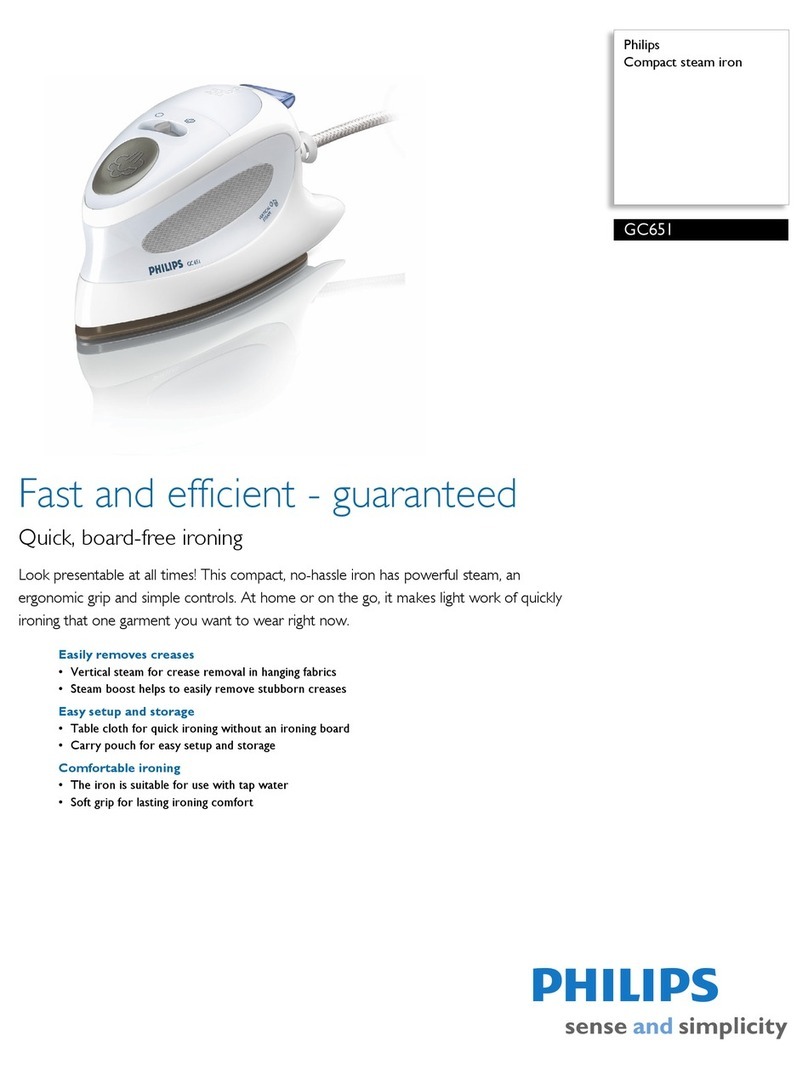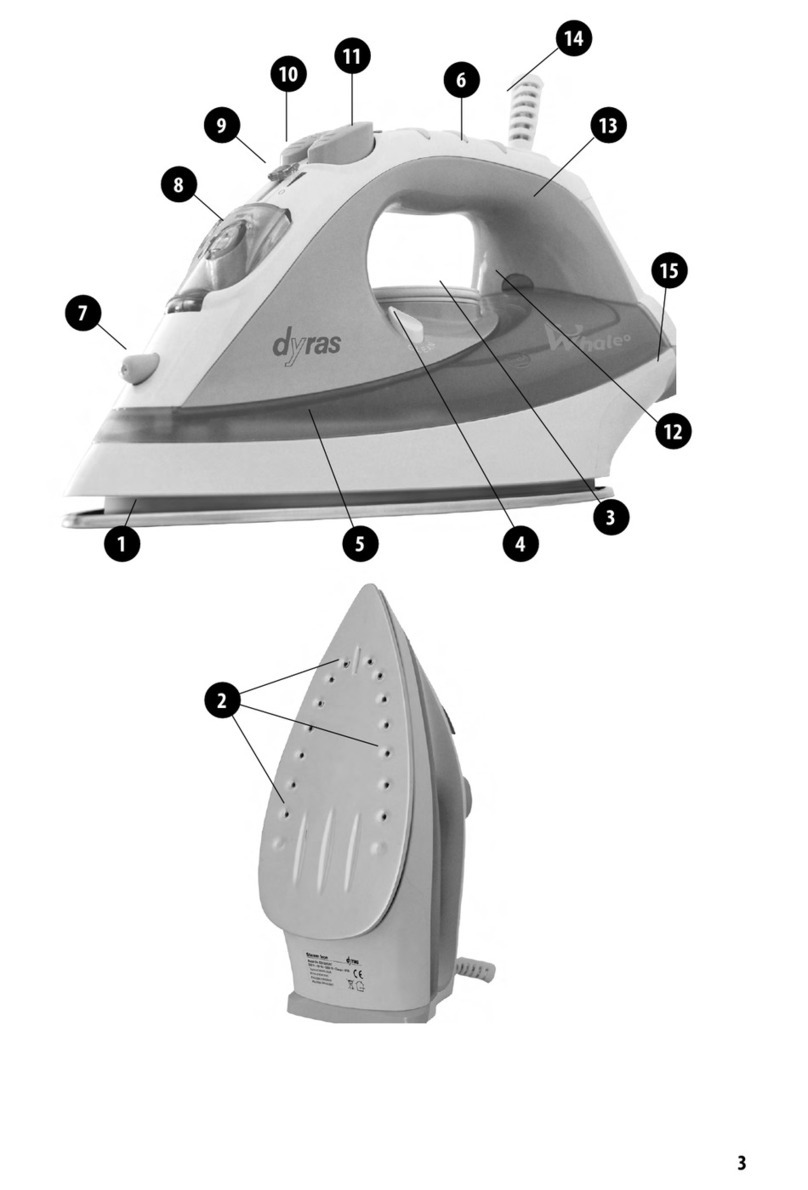
4
3. Open the water tank inlet cover q.
4. Using a jug, ll the water tank with ordinary tap water. To avoid air locks, tilt your
iron slightly while lling it.
5. Don’t ll the iron above the water level indicator MAX marking. Check the water
level by standing the iron on its heel.
6. When the iron is lled, close the water tank inlet cover.
We recommend that you:
• Start by ironing those items of laundry that require the lowest temperature (e.g.
synthetics). Finish by ironing fabrics which respond best to higher temperatures
and steam—such as cotton and linen.
• If you iron a fabric made of a blend of bres set the temperature of your iron to the
most delicate bre.
• Never use the burst of steam button on silks or synthetics.
• When using starch, it should be sprayed onto the reverse side of the fabric and
the soleplate cleaned more frequently.
• Do not iron over sharp or hard objects such as buttons, studs or zippers as they
will scratch the soleplate of your iron.
We recommend that you:
Your iron takes time to heat up and cool down. If you change the temperature setting on
your iron, you must give it time to adjust to the new setting.
This is especially important when you change from a high setting to a lower one. It
takes your iron longer to cool down than it does to heat up and this is the reason we
recommend that you begin ironing at lower temperatures.
If you do need to reduce the temperature of your iron, wait until the temperature
indicator light goes out and then comes on again before ironing. This will ensure that
your iron has reached the lower temperature and is not too hot for the fabric being
ironed.
For example, you have been ironing using the lll setting and want to change to the
ll setting:
1. Move the temperature control dial to the ll setting. Initially, the temperature
indicator light will be lit because your iron is still at a higher temperature.
2. Wait until the temperature indicator light goes out and then comes on again. Your
iron has now cooled to the correct temperature.
Ironing without steam
If you intend to dry-iron fabrics there is no need to ll the water tank. However, if water
is already in the water tank, you don’t need to empty it.
1. Set the steam control w to the no steam position (0).
2. Plug your iron into the mains supply and switch on.
3. Rotate the temperature control y until the desired setting is aligned with the dial
pointer a.
4. When the temperature indicator light t comes on, your iron is ready to use.
Steam ironing
During steam ironing, if you do not allow your iron to reach the
selected temperature water may drip from the soleplate.
It is recommended that for harder to iron fabrics such as cotton and linen, steam should
be used when ironing.
When ironing cotton and linen, always select the highest temperature. Steam should
never be used on delicate fabrics like nylons, acrylics and synthetics.
1. Fill your iron with water.
2. Plug your iron into the mains supply and switch on.
3. Set the temperature control y to the lll setting. The hotter your iron, the more
steam is generated.
4. When the temperature indicator light u comes on your iron is ready to use. The


































